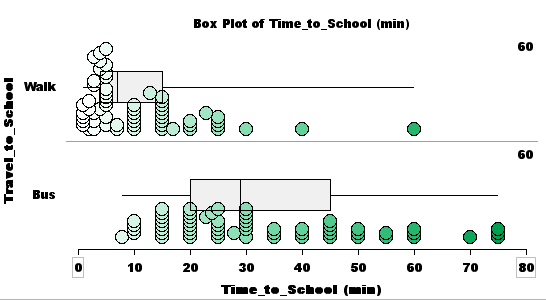Home > Statistics > Big ideas > Expectation > Expected differences
Expected differences
We may have an expectation that we wish to confirm with an investigation.
The stacked dot plot below, generated by TinkerPlots software, shows data on the time to get to school for Australian students who walk or who take the bus.
The plot shows that, despite the variation in the two groups, the expectation is generally that students who take the bus take longer to get to school than those who walk (three-quarters of bus students take longer than three-quarters of walking students).
When comparing the means, that of the walking students is approximately 11 minutes and that of the bus students is approximately 32 minutes. Therefore students taking the bus take about 21 minutes longer to get to school than the students who walk.
Given the positioning of the box plots and the difference in means, it appears that, overall, students who take the bus take longer to get to school than students who walk.

